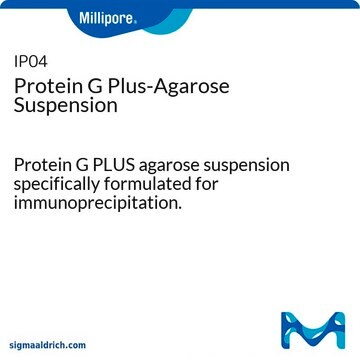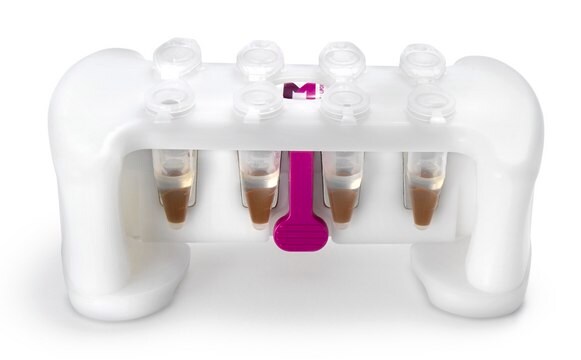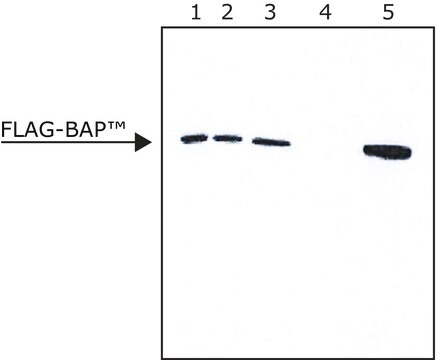IP05
Protein G Plus/Protein A Agarose Suspension
Protein G PLUS/Protein A-Agarose mixture specifically formulated for immunoprecipitation.
Synonyme(s) :
Affinity resin, Protein G/Agarose
About This Item
Produits recommandés
Forme
slurry (Liquid)
Contient
≤0.1% sodium azide as preservative
Fabricant/nom de marque
Calbiochem®
Conditions de stockage
do not freeze
Technique(s)
protein purification: suitable
Adéquation
suitable for microbiology
Conditions d'expédition
wet ice
Température de stockage
2-8°C
Description générale
Application
Avertissement
Forme physique
Autres remarques
Informations légales
Code de la classe de stockage
11 - Combustible Solids
Classe de danger pour l'eau (WGK)
WGK 1
Point d'éclair (°F)
Not applicable
Point d'éclair (°C)
Not applicable
Certificats d'analyse (COA)
Recherchez un Certificats d'analyse (COA) en saisissant le numéro de lot du produit. Les numéros de lot figurent sur l'étiquette du produit après les mots "Lot" ou "Batch".
Déjà en possession de ce produit ?
Retrouvez la documentation relative aux produits que vous avez récemment achetés dans la Bibliothèque de documents.
Les clients ont également consulté
Notre équipe de scientifiques dispose d'une expérience dans tous les secteurs de la recherche, notamment en sciences de la vie, science des matériaux, synthèse chimique, chromatographie, analyse et dans de nombreux autres domaines..
Contacter notre Service technique















